I first read Steve Orlando‘s writing in the excellent Octobriana, and since then, I’d followed his work. Last month, he was announced as the writer of a new, upcoming Midnighter series from DC Comics, the only one showcasing an LGBT character, now that the Batwoman series has stopped. I thought it was a good opportunity to talk to him about his career so far and his interest in comics.
Here’s the first part of the interview. The second part, which will focus on the Midnighter series, will be published next month.
Were you a comics reader as a kid or a teenager?
Absolutely! I got my first comic at a Flea Market in Syracuse, NY in the late 1980s (it had Tigra and Hellcat on it, as I am want to explain). From there I traveled to the spinner racks of Waldenbooks in the early 1990s, with Scarlet Spider and Impact Webbing, and then my fateful moment came with the local news article about Electric Blue Superman, which got me into modern comics in 1997. That’s right I owe my comics love to Electric Superman!
The incredibly rich back-story is what kept me in comics after the hype over the new costume and new powers drew me in. With comics, there was always more to learn, more to know, about the characters, the icons. And I loved that! JLA and Authority gave me the wide-screen storytelling I needed at the time, and DC Who’s Who and Marvel Handbook gave me the endless characters I wanted to know about, years before Wikipedia would further rob me of a life.
When did you think you’d like to write comics?
Well, that happened shortly after I started drawing, and realized what for me was the drive for comics creation. I wrote an illustrated 100-page graphic novel, and it was a wonderful experience, but even at my mandated speed of a page a day, the ideas and stories in my head were moving faster than my hand. I love every aspect of making comics, but writing and editing was the best fit for how my mind works and the speed at which my attention moves, when it comes to creativity and research.
You’ve cited superhero comics as having hooked you. Were you also interested in other genres?
Absolutely! When I first got in to comics, everyone was talking about Winick’s Pedro and Me1. And around the same time I got into a lot of the classic Joe Sacco stories about the turmoil in Central Europe. Which, I guess, could be classified as extreme slice of life drama, both in different ways.
From what I know of your work, you seem more interested in writing stories with fantasy/SF elements than in slice-of-life tales. What attracts you to those genres?
I think the answer is in myth and folklore. The drama and human element of slice of life books is intrinsically valuable. And in myth, the idea is to imbue these human struggles into larger than life characters and amplify them, so that they can become cross cultural and give larger audiences entry-points into what can be niche struggles. So I see this as a case of one begetting the other. Science Fiction is a medium by which we in minorities or we with personal struggles can translate what’s on our mind to a wider audience than ever before. And yes we use lasers and cockatrices to do it, but that is the point of folklore–oral tradition passing on the values and concepts that drove our world culture for the last few thousands of years. And as more people gain a voice, there is more of it than ever before.
That would be a perfect segue into questions about Octobriana, but before getting into your published work, let me ask you a couple of general questions: is there a reason why you write comics rather than literature?
Definitely! It’s the collaboration aspect of comics that I truly love, along with the ability to work and create stories with a combined visual and textual aspect. Information gets retained more in comic book form versus pure text or pure image, so stories in this format have the potential to dig into the brains of the readership in a unique way. And collaboration is a wonderful thing. It can be arduous, like any relationship, but the fruits are many. It’s people coming together to make each other better, and produce something as a team, which I think is doubly rewarding when you can make it work.
You’ve in fact collaborated with artists working in varied styles. What are you looking for in a collaborator?
I’m not looking for anything specific when it comes to collaborators, other than a confident, distinctive style and an eagerness to push ourselves as creators. I wasn’t kidding when I called making comics a relationship, and so really, the most important thing is having personalities and goals that connect, just like in any other relationship. If collaborators fit together in some way, and that doesn’t always mean get along (look at Herzog and Kinski, arguably never as great as when almost killing each other), then the work will follow.
Well, hopefully you won’t threaten to shoot your collaborators. So, let’s get into the work itself.
I must admit I haven’t seen your early work. There’s a “Steve Orlando” who wrote a short story in a issue of Femforce back in 1985. Was it you? And if not, was your first published story in the HOPE: New Orleans anthology back in 2007?
That Femforce Steve Orlando is me! BUT that issue didn’t come out in 1985, since that’s when I was born. But I did do two backup stories for the good folks at AC Comics, in Femforce, and then I did take part in the Hope: New Orleans anthology which I BELIEVE was organized by my friend Danny Donovan. It’s funny, I wrote about the Axeman there, and then he showed up in American Horror Story years later- it’s a great folk story!
Oh, I’m stupid. 1985 is the date the series started. Your work was in 2005!
So, I might be missing some things, but I’ve also found references to you in another anthology, volumes 1 (2009) and 3 (2013) of Outlaw Territory, published by Image. How did you get your stories there and what kind of stories were they?
Yes! I was very excited to take part in Outlaw Territory Volumes 1 & 3, Volume 3 of which was nominated for an Eisner! My entry into volume 1 actually came thanks to my friend Tyler Niccum, the artist for both our stories, who received an invitation from the editor, Michael Woods. Tyler and I had worked together on a self published anthology, Points of Connection, and were eager to work together again. We actually created two stories for volumes 1 and 2, and then our 2nd story got pushed to volume 1, so we are in there twice. Tyler is a wonderful artist, in fact he contributed “Undergods”[, a back-up story,] to the Undertow collection as well! Following volume 1′s performance, Michael invited me back to volume 3, and connected me with Celal Koc, who did a wonderful job on the art.
I’ll have to get those anthologies. I’ve read other anthologies published by Image, and they were always varied and entertaining.
You mentioned a self-published comic. I’ve seen some of your self-published work referenced on your website: would you care to tell us about those comics?
I did an adaptation of John Milton’s Paradise Lost, Book 1, for Hamilton College while in school. Following that, I released Normal:adj, an experimental one shot comic where each artist, twenty two in total, were given the same one page script and told to interpret it as they see fit. The catch was that the script was written completely with subjective adjectives and gender neutral nouns, so artists had to use their own views and experiences to describe the “normal” family and “normal” setting. Then Tyler and I collaborated and co-edited Points of Connection, which focused on slice of life stories from across the spectrum of wholesome to unsettling- very much a shoe-gazing type anthology with a rich diversity in art that let Tyler and I look into some topics we’d been talking about for some time. And of course, Octobriana, the Samizdat Edition, was my final self published release.
Normal:adj sounds very interesting. I wonder how well it would work in a different language, such as French, where it’s far harder to not gender nouns.
About Octobriana2: could you tell us how you become aware of the Octobriana character (for me, it was her appearance in Bryan Talbot’s Luther Arkwright) and what made you decide to write her another story?
I actually wrote my thesis at Hamilton College on Octobriana–so after finding out about her from the original 1971 book “created ” by Sadecky, I looked into the Talbot appearances along with the Billy Joel Tattoo, and Amazona, the character Sadecky arguably plagiarized to create Octobriana. The idea was that despite Sadecky’s fraud, the character gained a life of its own despite him. She grew out of his control to really become the open source character he lied about.
What did you study at college, by the way?
Actually, my concentration was on Russian Studies in college, along with a Senior Fellowship in Creative Writing.
So, you speak Russian. How cool! It’s not that often I meet someone who does–my husband also studied Russian at college, so I have a soft spot for that language.
I do! Or at least I did! Still understand and read/watch shows well, but there hasn’t been a lot of time to practice live conversation where I’m at.
Back to Octobriana: it was a heady mix of history, modern mythology and gender roles. What did you set out to do when you wrote the script?
When I set out with the script, the idea was to take the concept of my thesis: the meeting point of pop culture and folklore, and work it into the narrative of a magical Slavic bad-ass warrior woman. Gender politics HAVE to be considered with Octobriana, since she was created in many ways to turn sexuality and gender on its head. So I think when you have a character rooted in protest (real or imagined), you have to work some subversive ideas into the book. There’s a reason we have an MMF Threesome in the opening. Octobriana can and should be exciting and fun and explosive, but it also has to be as much about punching taboos as punching villains. And I think that’s why it’s fun to mash up mythology, in many ways a flag holder for tradition, and pop culture, the symbol of anything but tradition. They should be opposites in some ways, so what happens when they meet in one powerful character?
I think your point about combining mythology and pop culture as opposites is very interesting, and more potent than what is often done when those two are combined in mainstream fiction, which is usually an “updating” of the mythology.
Since you also included part of the modern history of Russia in your story, may I ask whether you’ve got an opinion about LGBT rights there you’d like to share?
Well, to be fair this is enmeshed in the 1960s history of Russia, when you could not even depict a breast if it wasn’t to suckle. I think it goes without question that there are deplorable acts being perpetrated against the queer community, and that the people committing them should be held responsible. I would say too that I’ve spoken to many people in Russia with positive opinions about the community, so we should be slow to generalize. It certainly is not a great time for the greater LGBT community there, BUT in the long game, I’m confident things will turn around. When that will be, I don’t know, but I know there are people supporting the community there, and in time society trends in the positive direction.
Since you’re speaking about LGBT rights, I’d like to ask you about the Virgil project for which you did a Kickstarter campaign in 2013. Could you give us an update?
Virgil is complete! Keep an eye on my Twitter feed about availability, but the rewards are in the mail or arrived as we speak, and it is great to have that journey finally near completion. JD, Chris and Thomas did an amazing job making the book a reality.
Great news!
You stated back then that the whole idea of the story of a gay man in Jamaica came from the Kevin Keller character at Archie. Could you tell us what you thought of that character, how important you thought it was, and how it lead you to create the Virgil project?
Certainly, Kevin Keller was definitely an inspiration, though the initial inspiration were Shaft and Django Unchained. Basically, Kevin Keller did show that the queer community was breaking into as of yet unexplored genres (in the case of Keller, the utopian ideal of Riverdale), which I thought was exciting. With Shaft and Django, it was this idea that Django was positioned as having a bold statement. But, I thought, is it really a risky thing today to say “Racism is bad?” I thought if the movie really had teeth, they would’ve made Django gay. And this is where the kernel for Virgil came from. Exploitation in the 70s was all about minority communities putting their issues to the forefront anyway they could, from the ground up, and using these hyperbole style action narratives as a medium for their outrage and their struggle. And I thought that would be a great fit for the current state of the queer community, especially in places like Africa and Jamaica, where it is more dangerous to be queer than in other places. But also I wanted to show that even in these rougher places, allies exist, and we see that in Virgil too. We don’t ignore the problems WITHIN the community or the pockets of help from WITHOUT, all the while using an exciting story to talk about the macro level problems of the present day.
I really look forward to reading this comic.
There was one short story you did before that, if I’m right, the rather weird centaur story in Vertigo’s Mystery in Space3 anthology. I thought it was really powerful, the way you used fantasy to comment on the perceived need for an opposition between body and mind. Would it be absurd to link that to your previous comments on the opposition between mythology and pop culture? In other words, could you be seen as a writer interested in going beyond traditional dichotomies?
I would certainly say so! (I would certainly hope so). Black and white is such a nonexistent concept these days that I think any creator coming from a background of pop culture, of wild media, has to like an element of subversion. The Mystery in Space story for me was about youthful sex rebellion, a sort of release and celebration of the animal nature of sexuality. In “Breeching”, society says you basically can only think with your crotch or your mind, with a clear answer to what is a superior choice. And here, the youthful, and ultimately fruitless teenage idealism of the leads drives them to make a conscious decision to go animal, as a social statement. But like so much when we are teens, everything seems vital and important, but so much in reality matters little to who we are as adults. It’s about perception. But yes, digging into dichotomies is definitely a part of my work, a part of the goal of fiction I’d say, which is get people to think.
Speaking of going beyond either/or propositions, you also wrote a story for Anything that loves, an anthology about bisexuality. Your story dealt with labels, more exactly the idea that for a lot of people, bisexuals don’t exist, they’re just gays who aren’t comfortable with being seen as gay. Do you see labels as something that’s useful, limiting, dangerous, obsolete, necessary?
I think they’re both problematic and useful, which is part of why so many people struggle with them. The Anything that loves story focuses on that–outside of the community, many people don’t think about things like BiPhobia or TransPhobia, even from within the community. Because support can be lacking at times, labels can be HELPFUL as they can create unity. The idea that bisexuality doesn’t exist, and is just another word for Gay, speaks still to our need to operate in absolutes. For some, the idea that someone could be interested in women and men is much harder to understand than someone exclusively interested in the same sex, where a traditionally heterosexual person can simply copy and paste their interactions with the opposite sex onto the same sex activities of someone they’re trying to understand. Bisexuality, Pansexuality, anything in between, is harder to put in a box. So in that respect, labels can create a sense of community and agency. But on the other hand, in a perfect world, we shouldn’t NEED them. People should respect how others define their sexuality, full stop. But that’s not the world we live in, so I think that identifying publicly is still useful until the day it isn’t.
Let’s leave sexual politics aside for a moment and plunge into equally deep waters (sorry, really grasping for straws regarding transitions): Undertow4 seems to me to be also a combination of mythology–a made-up one, this time–and pop culture. Artyom Trakhanov’s art is of course a large part of the allure of that comic, but what did you specifically try to bring to that project?
Undertow definitely combines a bit of pop and a bit of myth, with perhaps a bit more satire than the other books you mentioned, as it features a dark mirror of our own Me-First world culture. And yes there a lot of created internal culture, world building, to be had, when imagining a functioning metropolitan world that has evolved with water as its medium of life, and not air. Artyom was a huge help in that, we work really well together, bouncing ideas off each other and helping each other generate more, better concepts. That’s collaboration! The goal with Undertow was to have this completely alien culture, and yet show characters that the readers related to emotionally. The struggles, we hoped, would be universal, and show that the commonality of existence doesn’t require a certain species. On top of that, we hoped to bring incredible pulpy, science fiction fun to the book, with bawdy gore, giant monsters, demigods, and laser vs. condor battles. As with anything, we need to have a certain amount of punching to keep us happy, and a little bit to make you think once your head clears.
I’d definitely be interested in reading more about the world the characters inhabit, its history, the class struggles, all the things that make it a believable construct. Can you tell us whether there will be a second mini-series?
We would love to! Artyom and I definitely want to return to Undertow. The question is just when. We’re working on some new concepts now, and trying to figure out when the right time will be. BUT if all goes to plan, you’ll be seeing more comics from us as soon as possible.
Great. I can’t wait to see that.
Another thing I wanted to ask: earlier in this conversation, you said “Science Fiction is a medium by which we in minorities or we with personal struggles can translate what’s on our mind to a wider audience than ever before”. In Undertow, the minority struggle is more about class warfare than sexual politics. Do you see the two related?
I think they are definitely related. Sexual politics and class warfare are intrinsically linked–since we operate in a world where the need for Equal Pay for Equal Work is still unquenched in America, where it is still legal to fire someone simply because they are a member of the LGBTQ community. Gender and sexuality does not live in the private world, bubbled from the rest of our lives, and the minority struggle definitely encompasses both.
In “The Vision of Sita”, your contribution to another recent anthology, Vertigo Quarterly CMYK #3 (the yellow issue)5, the undying character in that (somewhat abstruse, in my opinion, but in a good way) story is very naturally shown as bisexual. I gather integrating LGBT characters in stories not LGBT-themed is important to you?
I think it’s very important! What it comes down to for me is that “LGBT” is not a genre. And so I think setting out to do “queer” stories, in a way, fetishizes the community in a way that isn’t moving things forward. It makes a big deal out of something that SHOULD just be any other thing. And if we want that in society, we should want that in our stories. So I think it is important to create stories that involve LGBTQ characters, and themes, but are not ABOUT them per se. Virgil was an action book featuring a queer lead, but it did not give extra attention to the boyfriend simply because it featured a same sex couple. It treated the leads the exact same way it would if they were a heterosexual couple. And I think that’s in many ways an important concept. With Yellow, the relationship wasn’t sexual per se, but certainly there was intense intellectual fascination, obsession, and jealousy driving these men, who ultimately let everything fall by the wayside in the name of their vanity.
When you say “if we want that in society, we should want that in our stories”, does that mean you believe in the transformative power of fiction?
Fiction certainly holds a strong influence over our culture, perhaps broadened into the term media. Is it “transformative?” perhaps on the micro level. Everyone has a moment where they first connect with a character or story on an emotional level, in a deep place. And I think that’s a powerful moment. But in the broader sense, we have to depict the worlds we want to live in, or say something about what we want to change, if we’re going to be creating works with a true social meaning. The ability of the media to influence beliefs is incredibly strong, and so when creating a story we must take the first step to not accidentally aggregate the very ideas we are trying to dispel.
Come back next month for the second part of the interview!
Notes:
- First published in 2000, there was a new edition
in 2009. Here’s my review. ↩
- An article about the character can be read here. ↩
- This 80-page comic, which I’d reviewed, was published in 2012, you can find it for example at Amazon. It is also available, alongside another Vertigo anthology, in a collection entitled Strange Adventures
. ↩
- Undertow is a six-issue mini-series, collected last September in a volume entitled Boatman’s Call. It’s available everywhere, including at Amazon
.
The story is set in a world where Atlantis is the world power. It follows a political rebel. It’s full of social satire and underwater blood-spilling. ↩ - The 80-page comic was published at the end of last year, and should still be available in comic shops or at Amazon
. A collection of the first year of the quarterly CMYK will be published next summer
. ↩



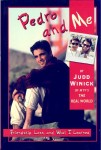
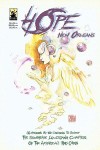





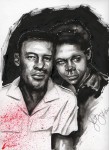
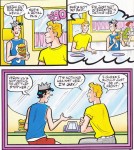






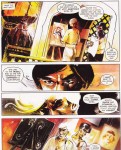
 Bluesky feed
Bluesky feed